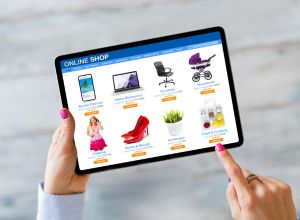E-commerce entrepreneurs have been riding the wave of the dropshipping business model, which has proven to be an efficient and cost-effective method to operate online stores. However, the success of any dropshipping venture largely depends on how effectively you manage your product listings. Therefore, understanding how to create compelling listings on your dropshipping store is vital. This article will guide you through the process, illuminating key areas to focus on for maximizing impact and revenue.
Understanding the Basics of Your Dropshipping Store

Before diving into the creation of listings, it’s important to understand the basics of your dropshipping store. Your dropshipping store is your online storefront, and the product listings are the virtual equivalents of physical products in a brick-and-mortar store. Just as a physical store meticulously arranges its products to be appealing and easily accessible, your online store must make the shopping experience straightforward and enjoyable. Each listing should provide a comprehensive overview of a product, including its features, benefits, and a compelling call to action.
Crafting Engaging Product Titles and Descriptions
The first step towards creating an effective listing is to develop engaging product titles and descriptions. The product title should be concise and clearly identify what the product is, while the description should give a detailed overview of the product’s features and benefits. It’s crucial that your product descriptions are engaging, informative, and easy to read. Don’t underestimate the power of a well-written product description in convincing a potential customer to make a purchase.

Keep in mind that online shoppers cannot touch or feel your products; hence your descriptions need to be as accurate and comprehensive as possible. You should cover all bases including the material, dimensions, color options, and any other specific features relevant to the product. Transparency builds trust, which ultimately drives sales.
Prioritizing Product Photography
Next, the importance of high-quality product images cannot be overstated. In e-commerce, visuals significantly impact the buyer’s decision. Given that customers can’t physically inspect the product, the images must provide a clear and accurate representation. Therefore, ensure you’re using high-resolution images and offer multiple angles or views. If your supplier cannot provide high-quality images, consider ordering a sample and taking your own photos.
Determining the Right Pricing Strategy
The pricing strategy for your dropshipping store is another essential aspect. Setting your prices too high could drive away potential customers, while pricing too low could undermine the perceived value of your products, or even lead to losses. Conduct thorough market research, understand your competitors, and consider your customer base’s average purchasing power when setting your prices. Remember, your pricing strategy is not just about covering costs and making profits; it’s also about positioning your brand in the market.

Shipping Information and Policies
Accurate and clear shipping information is an integral part of product listings in your dropshipping store. Many customers abandon their carts due to unexpected shipping costs, so it’s advisable to provide clear shipping details up-front. Whether you choose to offer free shipping, flat-rate shipping, or variable rates based on location, ensure this information is clearly outlined in your product listings.
Additionally, make your store policies clear. Information regarding returns, refunds, or any guarantees should be easy to find and understand. A clear and fair return policy can also serve as a selling point and provide extra assurance to your customers.
Optimizing Listings for Search Engines
Lastly, don’t forget to optimize your product listings for search engines. Use relevant keywords in your product titles and descriptions to improve the visibility of your listings in search engine results. However, avoid keyword stuffing, as this could harm your rankings and make your descriptions awkward to read. It’s all about striking a balance.
In conclusion, creating effective listings for your dropshipping store is not just about uploading product details and images; it’s a strategic process that demands careful consideration and execution. By crafting engaging titles and descriptions, using high-quality images, setting the right price, clearly communicating shipping information and policies, and optimizing for search engines, you can create listings that not only attract but also convert visitors into customers, taking your dropshipping store to new heights of success.










